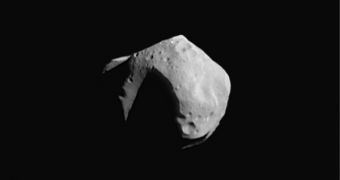The menace of getting struck by an asteroid or a comet has been one of the largest threats that humans have had to live with for countless centuries. Every time people hear that a new celestial body has been discovered, they immediately ask themselves “will it hit us?” This fear comes from the knowledge that an impact with the wrong asteroid could send us back to the Stone Age or make us go extinct for good.
And people are right to be afraid. The pictures we received over the years, of the surfaces of Venus, Mars, Mercury and the Moon, show the extent of the devastation that such impacts cause. The fact is that thousands of asteroids hit the planet every day, but most of them never make it to the ground and burn in the atmosphere, creating “falling stars.” The few that do hit leave behind large craters that even to this day are testimony of accounts that happened millions of years ago.
Now, the Space Studies Board, working with the Aeronautics and Space Engineering Board of the National Research Council (NRC), begins a two-stage study, meant to analyze potential threats that Near-Earth Objects (NEOs) pose to life on Earth, as well as methods and ways to ensure that such events do not take place. One stage of the study involves a public information request, meaning that anyone can send their ideas on how to catalog, identify and protect against NEOs.
"Congress asked the National Academies to look at current efforts for detecting and mitigating the threat posed by objects whose orbits may take them close to Earth. Specifically, Congress wants suggestions as to what steps to take next. In addition to looking at all current efforts and ideas, we want to learn about new approaches that might be valuable. Hence, we've issued a request to the scientific and technical communities for such suggestions," explains Committee to Review Near-Earth Object Surveys and Hazard Mitigation Strategies chairman, Irwin Shapiro.
"So no magic, please, just well-thought out concepts and plans commensurate with the time available for response to this request," Shapiro adds. The scientist is also a member of the Harvard Smithsonian Center for Astrophysics. For all those interested in submitting their ideas, the deadline set forth by the Space Studies Board is March 20, 2009. However, all intention letters have to be sent out by January 30th.

 14 DAY TRIAL //
14 DAY TRIAL //